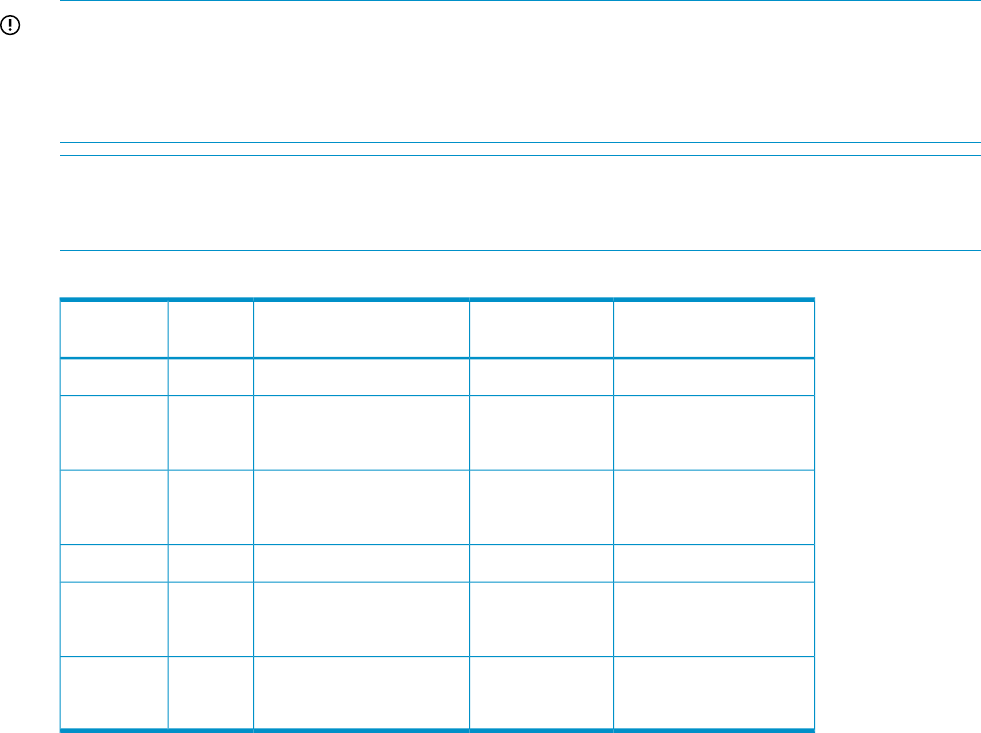HP StorageWorks XP Disk Array Configuration Guide (T5278-96047, May 2011)
Table Of Contents
- XP Disk Array Configuration Guide
- Contents
- 1 Overview
- 2 HP-UX
- Installation roadmap
- Installing and configuring the disk array
- Installing and configuring the host
- Connecting the disk array
- Configuring disk array devices
- Verifying the device files and drivers
- Creating the device files
- Creating the physical volumes
- Creating new volume groups
- Creating logical volumes
- Creating the file systems
- Setting the I/O timeout parameter
- Creating the mount directories
- Mounting and verifying the file systems
- Setting and verifying the auto-mount parameters
- 3 Windows
- 4 Novell NetWare
- 5 NonStop
- 6 OpenVMS
- 7 VMware
- 8 Linux
- 9 Solaris
- Installation roadmap
- Installing and configuring the disk array
- Installing and configuring the host
- Connecting the disk array
- Configuring disk array devices
- Configuring for use with Veritas Volume Manager 4.x and later
- 10 IBM AIX
- 11 Citrix XenServer Enterprise
- 12 Troubleshooting
- 13 Support and other resources
- A Path worksheet
- B Path worksheet (NonStop)
- C Disk array supported emulations
- D Using Veritas Cluster Server to prevent data corruption
- E Reference information for the HP System Administration Manager (SAM)
- F HP Clustered Gateway deployments
- Glossary
- Index

IMPORTANT: For optimal performance when configuring any XP disk array with a Tru64 host,
HP does not recommend:
• Sharing of CHA (channel adapter) microprocessors
• Multiple host groups sharing the same CHA port
NOTE: As illustrated in “Microprocessor port sharing (OpenVMS)” (page 58), there is no
microprocessor sharing with 8-port module pairs. With 16- and 32-port module pairs, alternating
ports are shared.
Table 13 Microprocessor port sharing (OpenVMS)
Ports sharedNr. of ports per
microprocessor
DescriptionModelChannel
adapter
N/A18-port 2GB CHIP Pair8HSRAE020A
CL1 - 1 & 5; 3 & 7
CL2 - 2 & 6; 4 & 8
216-port 2GB CHIP Pair16HSRAE006A
CL1 - 1 & 5; 3 & 7
CL2 - 2 & 6; 4 & 8
232-port 2GB CHIP Pair32HSRAE007A
N/A18-port 4GB CHIP Pair8FS2RAE021A
CL1 - 1 & 5; 3 & 7
CL2 - 2 & 6; 4 & 8
216-port 4GB CHIP Pair16FS2RAE022A
CL1 - 1 & 5; 3 & 7
CL2 - 2 & 6; 4 & 8
232-port 4GB CHIP Pair32FS2RAE023A
Defining the paths
Use P9000 or XP Command View Advanced Edition Software or XP Remote Web Console (shown)
to define paths between hosts and volumes (LUNs) in the disk array.
This process is also called “LUN mapping.” In XP Remote Web Console, LUN mapping includes:
• Configuring ports
• Enabling LUN security on the ports
• Creating host groups
• Assigning Fibre Channel adapter WWNs to host groups
• Mapping volumes (LDEVs) to host groups (by assigning LUNs)
58 OpenVMS










